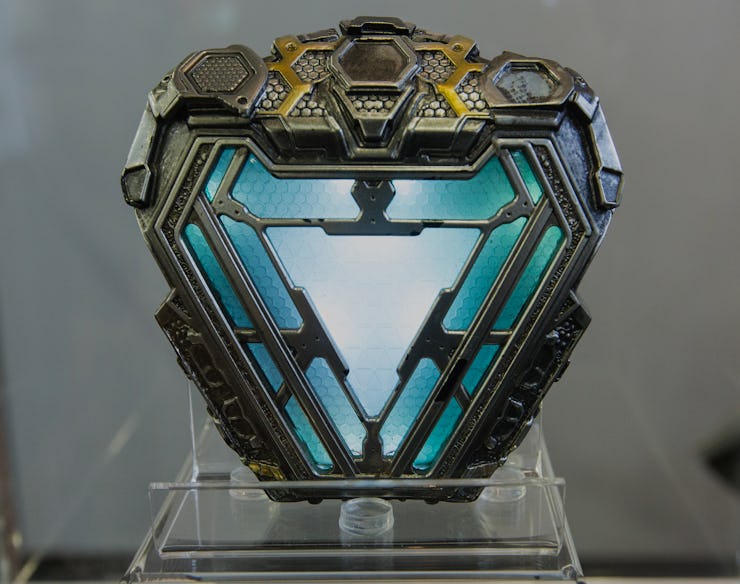How real-life technology is catching up to Iron Man's heart
Tony Stark's Arc Reactor is one of the most iconic pieces of tech in the MCU.

Iron Man’s artificial heart is — literally — front and center of this beloved comic-book character. A powerful metaphor, it showcases Tony Stark and his alter ego's strengths and weaknesses.
Stark is a technological genius capable of building a miniaturized Arc Reactor, but the bright, glowing device in his chest also keeps shrapnel from piercing his heart in a constant reminder of life’s fragility. Tony Stark casts a long shadow over Marvel Comics and its cinematic universe.
Stark's artificial heart is at once the source of his power and his greatest limitation. And in the real world, too, mechanical hearts offer people a new lease on life — but they have serious problems.
It doesn't get much cooler than a glowing Arc.
What is the forefront of heart technology now?
Mechanical heart technology keeps millions of people alive.
That's because so many people have heart disease. In the United States alone, the CDC estimates around 6.2 million adults suffer from heart failure. The World Heart Federation estimates that 17 million deaths around the globe are caused by cardiovascular disease.
A HeartMate 3, a type of VAD.
Surgically implanted mechanical pumps were first designed to be bridge to an eventual heart transplant. But now, ventricular assist devices are seen as equal to a real human heart replacement. Compared with transplants, these devices offer similar survival rates. But they carry risks, like a higher risk of extreme internal bleeding as a result of the implant.
The devices are slowly improving, however. In September of this year, a team of researchers at Harvard Medical School detailed in Science Translational Medicine what they described as an “innovative biocompatible pump” that could allow for “greatly improved long-term support of patients with heart failure.” The pump needs development before clinical testing, but the new pump could enable real-world cardiovascular patients get the same measure of reliability as an Arc Reactor.
Could someone build Tony Stark’s Arc Reactor?
Tony Stark's Arc Reactor gave him his fair share of problems.
The short answer is no, probably not, but that doesn't put off some comics fans from dreaming. In a 2013 Quora post, a hydraulics engineer named Ryan Clarke went in deep on the imagined technical specifics of the mini Arc Reactor. His imagining gives some idea of what it would take.
One crucial aspect of Clarke’s thinking is that both Howard (his father, and someone he had mixed feelings about) and Tony Stark use palladium and rhodium, specifically to “utilize the beta decay of Pd-107 ions as an electron source for the electron capture of Pd-103, thereby producing an electric circuit between two different radioactive isotopes.”
But as the movies tell it, palladium and rhodium come with a big problem: heavy metal toxicity, which would surely poison anyone’s body. The movies tackle the problem by delving further into the MCU for a solution— using Howard Stark’s notes on a mythical energy source, the Tesseract, he’s able to create a new element that could replace palladium.
To make an Arc Reactor safe, you would either need that as-yet undiscovered element or some sort of new shielding material that could protect the human body from the effects of heavy radiation.
Could a nuclear-powered heart extend someone’s life?
Yes, but scientists would recommend you try something else first. Pacemakers, which stimulate a regular heartbeat when the body’s own electrical currents won’t suffice, were once powered with a radioactive material called plutonium-238. These didn’t use chain reactions to make energy, so they weren’t nuclear reactors.
An nuclear pacemaker. Not quite an Arc Reactor.
The world’s first nuclear-powered pacemaker was installed in a person in 1972, but the practice was discontinued in 1988. The problem: Once a person died, they were carrying around a piece of nuclear waste in their body. Plutonium has been replaced by lithium, and now the Los Alamos National Laboratory asks that any discarded nuclear pacemakers be sent their way.
What do the comic books say?
Tony Stark’s Arc Reactor is tied in with his origin story. But there are multiple threads to this tale.
In the original Iron Man origin story, the billionaire playboy was weapons testing in Vietnam when captured by terrorists. Trapped in a cave, he encounters another prisoner, the brilliant Ho Yinsen. Yinsen helps Stark create a powerful electromagnet that can keep shrapnel embedded in his chest following an explosion away from his heart.
Ho Yinsen and Tony Stark discussing the Arc Reactor in Iron Man's debut, Tales of Suspense Volume 1 #39
This story hems fairly close to what is portrayed in the movies. But in the films, the setting is updated to Afghanistan. Technically, it may actually be the electromagnet that’s keeping the shrapnel from Tony Stark’s heart, but the Arc Reactor powering it is the coolest part, by far.